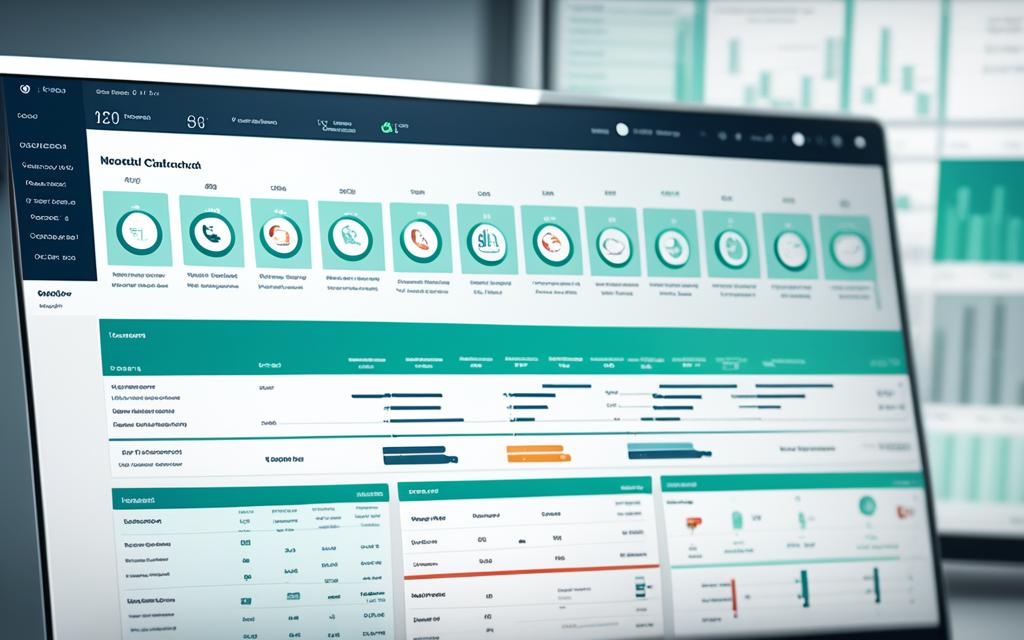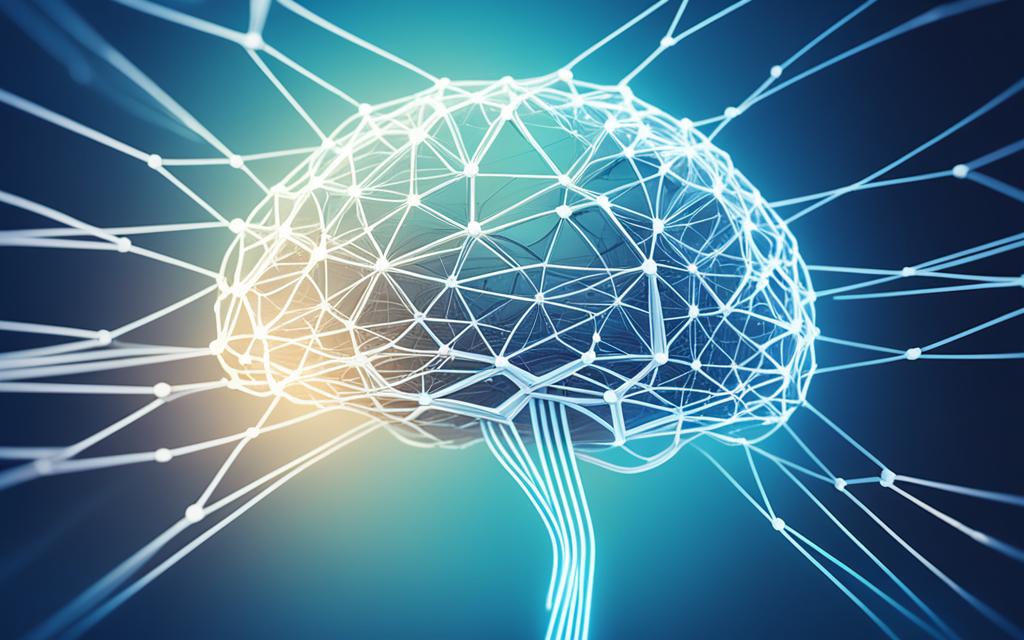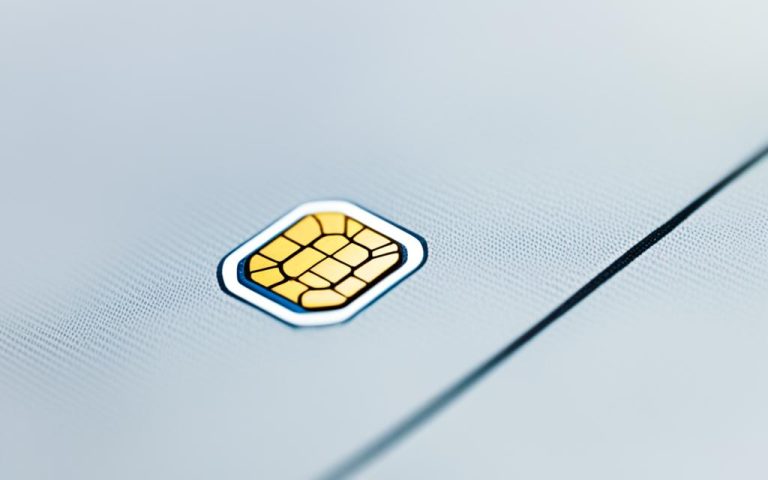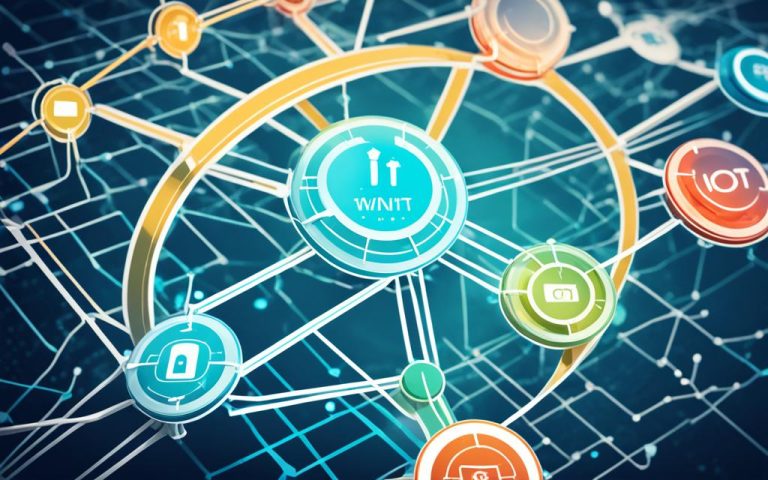The healthcare industry has witnessed a remarkable transformation with the advancements in technology. One area that has revolutionized healthcare delivery is the use of cellular networks in telemedicine. Through the power of cellular networks, healthcare providers are now able to provide real-time patient care regardless of their physical location.
Telemedicine has become a game-changer in the healthcare industry, particularly in remote or underserved areas where access to care can be limited. With the help of cellular networks, patients can now consult with healthcare providers through video consultations, virtual visits, and remote monitoring. This has significantly improved access to care, reduced travel requirements, and decreased wait times.
Moreover, cellular networks play a crucial role in delivering real-time patient care. By enabling instant communication and data exchange between healthcare providers and patients, cellular networks facilitate timely and accurate diagnoses, treatment adjustments, and ongoing monitoring.
Empowering Patients with Digital Health Solutions
Digital health solutions play a pivotal role in empowering patients and revolutionizing healthcare. With the advent of mobile apps, wearable devices, and remote monitoring tools, patients now have the power to track their vital signs and monitor chronic conditions in real-time.
These innovative technologies promote proactive self-care by enabling individuals to take charge of their health and well-being. Patients can actively participate in managing their conditions and make informed decisions about their treatment plans.
One of the key benefits of digital health solutions is the facilitation of remote patient monitoring. Through the use of connected devices and applications, healthcare providers can remotely monitor patients’ health status and intervene when necessary. This remote monitoring capability allows for early detection of potential health issues, reducing the need for frequent hospital visits and promoting continuous care.
“Digital health solutions empower patients to become partners in their own healthcare journey, fostering a sense of ownership and accountability,” says Dr. Lisa Adams, a leading expert in healthcare technology. “By actively engaging in self-care and leveraging remote monitoring tools, patients can experience improved health outcomes and reduced hospital readmissions.”
In addition to enhancing patient empowerment, digital health solutions contribute to the overall efficiency of the healthcare system. By reducing the reliance on in-person visits and enabling remote consultations, these technologies alleviate the burden on healthcare facilities and professionals.
“Digital health solutions are reshaping the healthcare landscape by shifting the focus from reactive care to proactive monitoring and self-management,” states Dr. Michael Richards, Chief Medical Officer of a leading digital health company. “Through the use of mobile apps and wearable devices, patients can easily access personalized healthcare information, monitor their progress, and actively participate in their treatment plans.”
By embracing digital health solutions, healthcare providers can empower patients, improve health outcomes, and enhance the overall efficiency of the healthcare system. The integration of technology and patient-centered care has the potential to revolutionize healthcare and pave the way for a healthier future.
Telemedicine: Bridging Gaps in Access to Care
Telemedicine has emerged as a game-changer in healthcare delivery, providing innovative solutions to bridge gaps in access to care, especially in remote or underserved areas. By leveraging technology, telemedicine enables patients to consult with healthcare providers through remote consultations, virtual visits, and remote monitoring, bringing care directly to the patients’ homes.
Improved Access to Care:
Telemedicine eliminates geographical barriers that hinder access to healthcare services. Patients in remote or rural areas can now receive medical consultations without the need for long-distance travel, reducing the burden of transportation costs and time commitments. This increased accessibility allows patients to seek timely care, enhancing their overall health outcomes.
Reduced Travel Requirements and Decreased Wait Times:
With telemedicine, patients can connect with healthcare providers from the comfort of their homes, reducing the need for significant travel. This not only saves valuable time but also improves convenience for patients, especially those with mobility limitations or chronic conditions. Additionally, telemedicine reduces wait times by streamlining the appointment process, ensuring that patients receive prompt medical attention.
Enhanced Efficiency and Productivity:
Telemedicine offers healthcare providers the opportunity to deliver care efficiently and productively. By leveraging remote consultations, providers can see a greater number of patients without the constraints of physical space or time. This leads to optimized resource utilization, cost savings, and improved productivity. With telemedicine, healthcare professionals can focus on delivering high-quality care while minimizing administrative burdens.
Dr. Sarah Thompson
“Telemedicine enables me to reach patients who may otherwise face significant barriers in accessing healthcare. By leveraging technology, we can provide virtual visits that are convenient, effective, and impactful. It’s truly transforming the way we provide care.”
Electronic Health Records (EHRs): Enhancing Care Coordination and Efficiency
The adoption of electronic health records (EHRs) has revolutionized healthcare administration. EHR systems digitize patient health information, streamline clinical workflows, and enhance care coordination. They facilitate seamless communication among healthcare providers, reducing medical errors.
EHRs provide valuable data insights for informed decision-making, improved treatment outcomes, and population health management.
Streamlining Clinical Workflows with EHR Systems
EHR systems play a crucial role in streamlining clinical workflows, ensuring that healthcare providers have quick access to patient information. This digital transformation eliminates the need for manual paperwork and enables efficient data storage and retrieval.
Enhancing Care Coordination
One of the significant benefits of EHRs is the improvement in care coordination among healthcare teams. With EHR systems, healthcare providers can easily share patient information, test results, and treatment plans, promoting collaborative decision-making and continuity of care.
Reducing Medical Errors
EHRs have proven to be effective in reducing medical errors. By providing accurate and up-to-date information, EHR systems help healthcare providers make informed decisions, avoid medication errors, and improve patient safety. Additionally, EHRs reduce the risk of duplicate tests or procedures, enhancing overall efficiency.
Data Insights for Improved Outcomes
EHRs serve as a valuable source of data, offering insights that can drive informed decision-making and improve treatment outcomes. Through data analytics and reporting capabilities, healthcare organizations can identify trends, monitor outcomes, and make data-driven improvements in care delivery.

Electronic health records have revolutionized the way healthcare is delivered, streamlining workflows, enhancing care coordination, and reducing medical errors. The power of EHRs lies in the valuable data they generate, providing insights that enable better patient outcomes and population health management.
Artificial Intelligence (AI) and Machine Learning: Unlocking Insights and Improving Diagnostics
Artificial intelligence (AI) and machine learning technologies are revolutionizing the healthcare industry by leveraging data analysis to uncover patterns, predict outcomes, and facilitate clinical decision-making. By harnessing the power of AI and machine learning, healthcare professionals are able to gain valuable insights that can significantly improve diagnostics and patient care.
One of the key applications of AI and machine learning in healthcare is in the development of diagnostic tools. These tools utilize AI algorithms to enhance disease identification, interpret medical imaging, and create personalized treatment plans. With AI-powered diagnostics, healthcare professionals are able to detect diseases more accurately and efficiently, resulting in improved patient outcomes.
It is important, however, to address ethical considerations surrounding the use of AI in healthcare. Data privacy, bias, and transparency must be carefully managed to ensure responsible and equitable use of AI technologies. By implementing robust governance frameworks and adhering to best practices, healthcare organizations can leverage AI’s potential while safeguarding patient privacy and promoting fairness.
“AI and machine learning have the potential to revolutionize diagnostics in healthcare, unlocking insights that were previously inaccessible. However, it is crucial to prioritize ethical considerations and ensure that these technologies are used responsibly for the benefit of all patients.”
As AI and machine learning continue to advance, healthcare analytics plays a vital role in transforming raw data into actionable insights. Analytics platforms equipped with AI capabilities help healthcare organizations uncover patterns and trends, enabling them to make data-driven decisions and optimize operational efficiency.
Benefits of AI and Machine Learning in Healthcare Analytics:
- Improved diagnostic accuracy and efficiency
- Evidence-based treatment recommendations
- Real-time monitoring of patient health indicators
- Early detection of disease outbreaks
- Identification of high-risk patient populations
The integration of AI-driven healthcare analytics enables healthcare providers to deliver personalized and targeted care, resulting in better patient outcomes and improved population health management.
| AI and Machine Learning Applications in Healthcare Diagnostics | Benefits |
|---|---|
| Disease identification | Enhanced accuracy and early detection |
| Medical imaging interpretation | Improved accuracy and reduced interpretation time |
| Personalized treatment plans | Tailored care and improved outcomes |
By leveraging AI and machine learning, healthcare professionals can unlock valuable insights from vast amounts of data, leading to improved diagnostics and patient care. However, ethical considerations and responsible use of these technologies are essential for ensuring their full potential in healthcare.
Continue reading: Challenges and Opportunities in Health Tech
Challenges and Opportunities in Health Tech
Technology adoption in healthcare comes with its fair share of challenges. The rapid advancement of technology brings about concerns related to data privacy, security, regulatory compliance, and workforce training. These obstacles require proactive measures to ensure the confidentiality, integrity, and availability of sensitive healthcare information. Additionally, the transformational power of technology can only be harnessed effectively if all individuals, regardless of their socioeconomic background, have equal access to technology and healthcare services.
One of the major hurdles in the adoption of health tech is the protection of data privacy. As healthcare institutions increasingly rely on digital platforms for storing patient information, safeguarding sensitive data becomes paramount. Strict protocols and robust security measures must be in place to prevent unauthorized access, data breaches, and potential misuse of patient data.
Aligning with regulatory compliance is another challenge that healthcare organizations face when adopting technology-driven solutions. Compliance with regulations such as the Health Insurance Portability and Accountability Act (HIPAA) ensures the ethical handling of patient data, but it also adds complexity to the implementation and operation of health tech systems. Organizations must prioritize the adherence to these regulations to maintain patients’ trust and avoid legal repercussions.
Moreover, providing equitable access to technology and healthcare services remains a significant challenge. In many communities, particularly in remote or underserved areas, disparities in access to technology hinder the adoption and utilization of health tech solutions. Bridging this digital divide requires collaborative efforts from various stakeholders, including policymakers, healthcare organizations, technology vendors, and community leaders.
Workforce training and education also pose challenges in the implementation of health tech solutions. Healthcare professionals need to be equipped with the necessary skills and knowledge to leverage advanced technologies effectively and ensure seamless integration into their clinical workflows. Continuous training programs and professional development opportunities are essential for healthcare providers to adapt to the evolving landscape of health tech.
Despite these challenges, there are significant opportunities to overcome them and drive further innovation in health tech. Ongoing innovation is crucial to address scalability, interoperability, and integration with existing healthcare systems. The collaboration between policymakers, healthcare organizations, and technology vendors is vital in identifying and addressing these challenges collectively.
“The possibilities of health tech are vast, but we must address the challenges it brings. By prioritizing data privacy, ensuring regulatory compliance, promoting access, and investing in workforce training, we can unlock the full potential of technology to revolutionize healthcare.”
Technology Challenges and Opportunities in Health Tech
| Challenges | Opportunities |
|---|---|
| Data privacy and security concerns | Innovative solutions to protect patient information |
| Regulatory compliance complexities | Adherence leading to trust and legal compliance |
| Disparities in access to technology and healthcare services | Collaboration for equitable access and inclusion |
| Workforce training and education | Continuous development to optimize technology utilization |
Overcoming these challenges and embracing the opportunities presented by health tech will pave the way for a more efficient, patient-centric healthcare system.

Conclusion
Technology has become a catalyst for healthcare transformation, revolutionizing the industry and empowering both patients and healthcare providers. The integration of digital health solutions, telemedicine, electronic health records (EHRs), and artificial intelligence (AI) has paved the way for personalized, accessible, and efficient care.
Digital health solutions such as mobile apps, wearable devices, and remote monitoring tools have enabled patients to actively engage in their own healthcare journey. These technologies promote self-care, empower individuals to monitor their vital signs, and facilitate remote patient monitoring, ultimately improving patient outcomes.
Telemedicine has emerged as a game-changer, bridging gaps in access to care. Through video consultations, virtual visits, and remote monitoring, patients can easily connect with healthcare providers regardless of their geographic location. This not only improves access to care, reducing travel requirements and wait times, but also enhances efficiency and productivity for healthcare providers.
Electronic health records (EHRs) have enhanced care coordination and efficiency. By digitizing patient health information and streamlining clinical workflows, EHR systems enable seamless communication among healthcare providers, reducing medical errors. These systems provide valuable data insights for informed decision-making, improved treatment outcomes, and population health management.
Artificial intelligence (AI) and machine learning technology have unlocked new opportunities in healthcare analytics and diagnostics. By analyzing vast amounts of data, AI-powered tools assist in clinical decision-making, improve disease identification, and enhance personalized treatment plans. However, ethical considerations such as data privacy, transparency, and bias need to be addressed to ensure responsible and equitable use of AI in healthcare.
Despite the tremendous potential of technology in healthcare, there are challenges that need to be overcome. These include data privacy and security, regulatory compliance, workforce training, and disparities in access to technology and healthcare services. To address these challenges and ensure equitable access, collaborative efforts are required from policymakers, healthcare organizations, and technology vendors.
In conclusion, technology is transforming healthcare and has the ability to reshape the future of the industry. By embracing innovation and working together, we can harness the power of technology to achieve a healthier and more efficient healthcare system for all.
FAQ
How has technology transformed the healthcare industry?
The healthcare industry has witnessed a remarkable transformation with the advancements in technology. Digital health solutions, telemedicine, electronic health records (EHRs), and artificial intelligence (AI) have revolutionized healthcare delivery, empowering patients, enhancing care coordination, and improving clinical outcomes.
What are digital health solutions, and how do they empower patients?
Digital health solutions such as mobile apps, wearable devices, and remote monitoring tools empower patients to take control of their health and well-being. These technologies enable patients to track their vital signs, monitor chronic conditions, and promote proactive self-care. They also facilitate remote patient monitoring, reducing hospital readmissions and enhancing overall health outcomes.
How does telemedicine bridge gaps in access to care?
Telemedicine has emerged as a game-changer in healthcare delivery, especially in remote or underserved areas. It enables patients to consult with healthcare providers through video consultations, virtual visits, and remote monitoring. Telemedicine improves access to care, reduces travel requirements, decreases wait times, enhances efficiency and productivity for healthcare providers, and leads to cost savings and better resource utilization.
How do electronic health records (EHRs) enhance care coordination and efficiency?
The adoption of electronic health records (EHRs) has revolutionized healthcare administration. EHR systems digitize patient health information, streamline clinical workflows, and enhance care coordination. They facilitate seamless communication among healthcare providers, reducing medical errors. EHRs also provide valuable data insights for informed decision-making, improved treatment outcomes, and population health management.
How does artificial intelligence (AI) and machine learning improve diagnostics?
AI and machine learning technologies analyze vast amounts of data to uncover patterns, predict outcomes, and assist in clinical decision-making. AI-powered diagnostic tools improve disease identification, medical imaging interpretation, and personalized treatment plans. However, ethical considerations regarding data privacy, bias, and transparency must be addressed for responsible and equitable use of AI in healthcare.
What challenges and opportunities arise from technology adoption in healthcare?
While technology presents numerous opportunities in healthcare, it also faces challenges related to data privacy, security, regulatory compliance, and workforce training. Disparities in access to technology and healthcare services pose additional challenges. Ongoing innovation is required to address scalability, interoperability, and integration with existing healthcare systems. Collaborative efforts from policymakers, healthcare organizations, and technology vendors are necessary to overcome these challenges.
How is technology transforming healthcare?
Technology is transforming healthcare by empowering patients, enhancing care delivery, and improving clinical outcomes. Digital health solutions, telemedicine, electronic health records, and AI have the potential to deliver personalized, accessible, and efficient care. Addressing challenges of technology adoption and ensuring equitable access to healthcare services require collaborative efforts from various stakeholders.



















